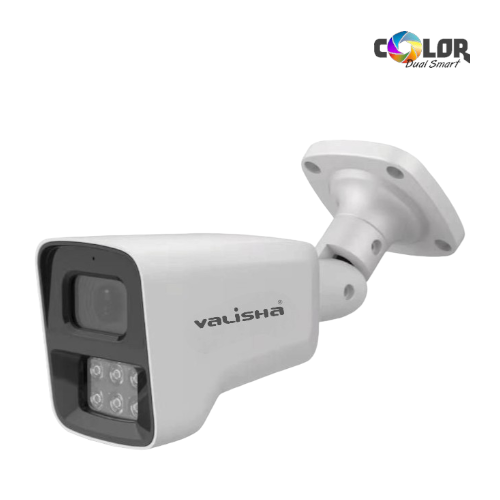IP cameras capture video footage digitally and transmit data over a network, such as the Internet or a local network. Here’s how they work:
Components: IP cameras consist of several components:
Lens: Captures images.
Image Sensor: Converts light into an electrical signal.
Processor: Encodes signals into a compressed format.
Network Connectivity: Transmits data over an Ethernet cable or wirelessly Data Transmission:
The lens captures images, and the image sensor converts them into digital data.
The processor encodes the data for transmission.
The digital data is sent over an Ethernet cable or Wi-Fi to a network switch or router.
From there, you can access and view the data on devices like computers, smartphones, or tablets using dedicated software or a web browser.
Types of IP Cameras:
Fixed IP Cameras: Ideal for monitoring specific areas with a fixed field of view.
Pan-Tilt-Zoom (PTZ) IP Cameras: Allow remote control for wide-area coverage and flexible monitoring.
Wireless IP Cameras: Transmit data via Wi-Fi, suitable for areas where wiring is challenging.
Outdoor IP Cameras: Designed to withstand harsh weather conditions
The CCTV camera manufacturing process involves several steps to assemble and produce high-quality surveillance cameras. Let’s dive into the details:
- Procurement of Raw Materials and Parts:
- The process begins with sourcing raw materials such as camera lenses, PCB circuits, sockets, switches, and other components.
- Each part is carefully checked for quality and compatibility.
- Mounting Process (Assembling):
- All the components are assembled together. This includes mounting the camera lens, PCB circuit, socket, switch, and other necessary parts.
- The mounting process ensures that all components fit correctly and securely.
- Interconnecting Components:
- After mounting, the interconnection of parts takes place. Wires, connectors, and cables are used to link different components.
- Proper connections are crucial for the camera’s functionality.
- Quality Control and Testing:
- The assembled CCTV camera undergoes rigorous quality checks.
- Technicians verify image clarity, focus, color accuracy, and other performance parameters.
- Any defects or issues are addressed during this stage.
- Packaging:
- Once the camera passes quality control, it is carefully packaged for shipment.
- Proper packaging ensures that the camera reaches customers in perfect condition.

